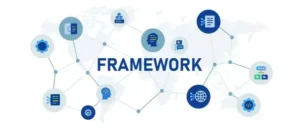Framework

Framework integró procesamiento de textos, hojas de cálculo y bases de datos, mientras que Cóndor y Revelation desarrollaron modelos relacionales con distintos requerimientos y capacidades.
The framework is an integrated software package that provides the user with a quick and efficient set of tools for developing and managing ideas and applications. Unlike other integrated packages, it does not distinguish between different types of environments; instead, all system resources and functions are shared across all applications.
Framework includes:
– Word processing
– Spreadsheet
– Database
– Graphics design
– Diagrams
– Communications
– Programming language
In framework, each of these applications can be used in multiple instances; for example, several independent spreadsheets can run simultaneously, as well as multiple databases, and so on.
The hardware requirements are:
– IBM PC computer with MS-DOS
– Minimum 384 Kb RAM
– Two disk drives or one drive and one hard disk
– A monitor
The fundamental idea of this integrated package is the concept of a “frame,” which can be translated as window. Unlike other packages where windows are just visual areas of a spreadsheet, here frames are true data structures that remain active even when removed from the screen. All data operations are performed inside these frames.
In framework, as well as in most integrated packages, the database is simply a two-dimensional table of fields and records stored in memory, therefore limited by the maximum amount of RAM available.
Its operation is very simple: when creating the database, you specify the number of fields and records it will contain, and the database is created. From there you can enter data, perform searches, modify, sort, etc., using all the commands from the general menu.
This integrated package offers an additional advantage: it can directly read files produced with dBASE III without needing a translation program to convert data formats.





